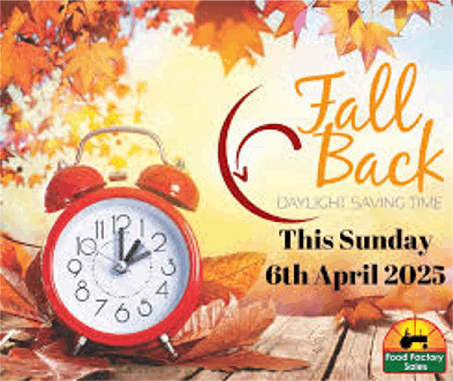원주민 예술가가 수만 개의 굴 껍질을 사용하여 시드니 오페라 하우스에서 중간 작품을 만듭니다.
우리 중 많은 사람들이 고급 레스토랑에서 제공되는 진미로 굴을 생각합니다. 껍질을 치우고 쓰레기통에 던지면 식당은 메인 코스로 이동합니다.
Quandamooka 아티스트 Megan Cope에게 Kinyingarra(Jandai 언어로 굴)는 소비되는 사치품 그 이상입니다.
“실제로 이 보잘것없는 생명체는 가장 강력한 작은 생명체 중 하나입니다. 그들은 놀랍습니다. 그들은 물을 정화하고 탄소를 고정시킵니다.”라고 그녀는 말합니다.
이 특별한 창조물은 다시 그녀의 최신 프로젝트의 초점입니다. 시드니 오페라 하우스를 위한 주요 새 공공 예술 작품으로, 방문객들에게 가디갈 사람들이 Tubowgule이라는 사이트와의 깊은 관계를 상기시키기 위해 50주년 기념의 일환으로 의뢰했습니다.
Cope는 지역 레스토랑과 수산 시장에서 기부한 80,000개의 굴 껍질을 사용하여 거대한 배를 형성할 것입니다.
“나는 이 건물을 좋아하지만 여기에 있을 때 나는 이 건물을 통해 보고 이전에 여기에 있었던 것을 봅니다. 많은 원주민들이 그렇게 한다고 생각합니다.”라고 그녀는 말합니다.
하지만 그녀는 혼자 할 수 없습니다.
장갑, 칫솔, 나무 테이크아웃 칼로 무장한 자원 봉사 “스크럽 클럽”은 굴 껍질을 청소하기 위해 Cope의 Marrickville 스튜디오에서 정기적으로 모임을 가졌습니다.
그들은 이미 35,000개를 청소했으며 9월에 예술품을 설치하는 데 필요한 수의 두 배 이상을 청소했습니다.
Cope는 “우리는 이것을 함께 만들고 있습니다.”라고 말합니다.
현지인·관광객 ‘스크럽클럽’ 가입
금요일 오페라 하우스 옆에 있는 특별 스크럽 클럽에서는 수백 개의 깨끗한 조개껍데기가 집계에 추가되었습니다.
11학년 학생 Marcus Ticic은 자신의 일을 하기 위해 교실을 항구의 전망으로 바꿨습니다.
“나는 학교보다 여기 있는 것이 훨씬 낫다”고 그는 말한다. “매우 고요하고 매우 고요합니다.”
“설정이 완료되면 동료들에게 내가 그 일부였다고 말할 것이라고 생각하는 것이 좋습니다.”
야심 찬 미술 교사 William Cao는 연구의 일부로 참여하기 위해 University of NSW 학생들 중 하나였습니다.
“지루할 것 같지만 어느 정도 그루브에 빠져들게 됩니다.”라고 그는 말합니다.
Brisbane에서 온 Eve Darwin은 남동생 Alex와 함께 관광을 하고 있었는데 그들이 합류하기로 결정했습니다.
“우리는 관광지를 확인해야겠다고 생각했고 우연히 이것을 발견하고 왜 안 될지 생각했습니다.” 알렉스는 말한다.
그 과정에서 일어나는 사색과 대화는 완성된 프로젝트만큼 Cope에게 중요합니다.
“호주에서 우리가 해야 할 일은 우리의 국가적 정체성과 퍼스트 네이션의 역사 및 문화와 어떻게 연결되는지가 제 업무의 중심에 있습니다.”라고 그녀는 말합니다.
“그래서 실제로 사람들과 함께 작품을 개발하고 서로 시간을 보내며 작품을 만들고 굴과 연결하고 환경과 사회적 풍경을 반성할 수 있다는 것은 정말 신나는 일입니다.
“많은 사람들에게 이 사이트의 원주민 관점과 연결되는 것은 이번이 처음이 될 것이므로 저에게는 이것이 정말 중요합니다.”
일일 청소 세션은 Cope의 Marrickville 스튜디오에서 열리며 들러서 도움을 주는 모든 사람과 함께 나머지 작업을 완료합니다.
역사의 뉘앙스를 이해하는 책임
청소가 완료되면 각 껍질에 구멍을 뚫어 덩어리로 묶고 나무 기둥에 부착하여 거대한 배를 연상시킵니다.
수천 년 동안 원주민들이 같은 장소에서 조개껍질과 생선 뼈를 모으고, 먹고, 버리면서 형성되었으며, 한때 항구를 따라 늘어선 패총이 있었습니다.
식민화 이후 그들은 신도시 건설을 위한 시멘트를 만들기 위해 석회석을 얻기 위해 태워졌습니다.
코프의 기념비적인 작품은 오페라 하우스 개관 50주년을 기념하기 위해 9월 말부터 한 달간 축제를 연다.
프로그래밍 책임자인 Fiona Winning은 건물이 자리 잡은 부지의 원주민 역사를 인정하는 것이 중요하다고 말합니다.
“사람들은 역사가 있다는 것을 알고 있지만, 우리는 그러한 역사의 뉘앙스를 이해하기 위해 많은 작업을 수행해야 하며 이는 그 중 일부일 뿐입니다.”라고 그녀는 말합니다.
“저는 모든 호주인으로서 우리가 살고 일하는 나라, 수로와 하늘에 대해 더 많이 이해해야 할 책임이 있다고 생각합니다.”
이 설치는 의회에 대한 원주민의 목소리에 대한 국민투표를 앞두고 있을 것입니다.
계획에 없긴 하지만 오페라 하우스의 현대미술 큐레이터 마이클 도(Micheal Do)는 시기를 반겼다.
“호주인을 위한 문화 센터로서 우리는 시대정신을 반영하고 현재의 순간을 반영하며 이것이 이 세대의 문제입니다. 물론 우리는 그것을 반영해야 하며 그것이 우리가 일을 하는 이유입니다.”라고 그는 말합니다.
스크럽 클럽에 참여하는 방법에 대한 자세한 내용은 여기에서 확인할 수 있습니다.
더 많은 지역 뉴스 찾기
귀하의 위치를 탐색하고 더 많은 지역 ABC 뉴스 및 정보를 찾으십시오.
6시간 전에 게시됨
Indigenous artist uses tens of thousands of oyster shells to create midden artwork at Sydney Opera House
/ By Rosemary Bolger
Posted 6h ago6 hours ago
Help keep family & friends informed by sharing this article
abc.net.au/news/oyster-shells-sydney-opera-house-indigenous-artist-megan-cope/102517712
Link copiedCOPY LINKSHARE
Many of us think of oysters as a delicacy served at fancy restaurants. The shells are taken away, thrown in the bin, and diners move on to the main course.
For Quandamooka artist Megan Cope, kinyingarra (oyster in Jandai language) is so much more than a luxury item to be consumed.
“Actually this humble creature is one of the most powerful little creatures. They’re amazing, they clean the water, they fix carbon,” she says.
The special creature is again the focus of her latest project — a major new public artwork for the Sydney Opera House, commissioned as part of its 50th anniversary, to remind visitors of the deep connection to the site called Tubowgule by Gadigal people.
Cope will use 80,000 oyster shells, donated from local restaurants and the fish market, to form a giant midden.
“I love this building, but when I’m here I see through this building and I see what was here before and I think a lot of Indigenous people do that,” she says.
But she can’t do it alone.
A volunteer “scrub club” armed with gloves, toothbrushes, and wooden takeaway knives has been meeting at Cope’s Marrickville studio regularly to clean oyster shells.
They’ve cleaned 35,000 already with at least double that number needed for the artwork to be installed in September.
“We’re making this together,” Cope says.
Locals and tourists join ‘scrub club’
At a special scrub club next to the Opera House on Friday, hundreds more clean shells were added to the tally.
Year 11 student Marcus Ticic swapped the classroom for a view of the harbour to do his bit.
“I’d much rather be here than school,” he says. “It’s very serene, very tranquil.”
“It’s cool to think that when it’s set up, I’ll tell my mates I was part of that.”
Aspiring art teacher William Cao was among University of NSW students to get involved as part of their studies.
“It seems like it would be boring, but you kind of get into the groove of it,” he says.
Eve Darwin from Brisbane was doing some sightseeing with her brother, Alex, when they decided to join in.
“We thought we’d check off the touristy thing and we stumbled across this and thought why not?” Alex says.
The contemplation and conversations that happen in the process are just as important to Cope as the finished project.
“The work that we have to do in Australia in terms of our national identity and how we connect with First Nations history and culture, that’s at the centre of my practice all the time,” she says.
“So it’s really exciting to actually be able to develop a work with the people and spend time with each other, making the work and connecting with the oyster, and reflecting on the environment and social landscape.
“For many people, it’ll be the first time that they connect with the Aboriginal perspective of this site, so that’s really important to me.”
Daily cleaning sessions will be held at Cope’s Marrickville studio to complete the rest with anyone welcome to drop in and help.
Responsibility to understand nuances of history
Once clean, a hole will be drilled into each shell so it can be tied into clusters and attached to wooden poles, evoking a giant midden.
Formed over thousands of years from Aboriginal people gathering, eating, and discarding shells and fish bones in the same spots, middens once lined the harbour.
After colonisation, they were burnt for limestone to make cement for the building of the new city.
Cope’s monumental artwork will open a month-long festival starting at the end of September to celebrate the 50th anniversary of the opening of the Opera House.
Director of programming Fiona Winning says it is important to acknowledge the First Nations history of the site the building sits on.
“People know that there is a history, but we need to do a lot of work about understanding the nuances of those histories and this is just one little part of that,” she says.
“I think we’ve got a responsibility as all Australians to understand more about the country we live on and work on, and the waterways and the skies.”
The installation will coincide with the lead-up to a referendum on the Indigenous Voice to Parliament.
While not planned, curator of contemporary art at the Opera House Micheal Do welcomes the timing.
“As a cultural centre for Australians, we reflect the zeitgeist, we reflect the current moment, and this is the issue of this generation. So, of course, we have to reflect that and that’s why we have the work,” he says.
More information about how you can get involved in the scrub club is available here.
Find more local news
Browse for your location and find more local ABC News and information
Posted 6h ago










